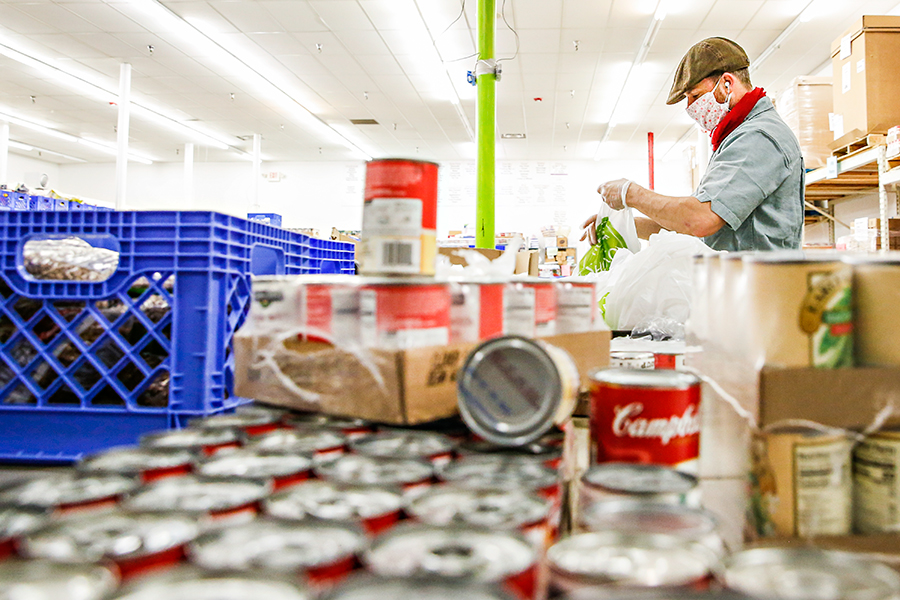A national food bank organization estimates roughly 170,000 Montanans could face hunger this year, a significant spike propelled by COVID-19, and food security advocates are seeking increases in SNAP benefits to both address the current plight and expected fallout from the pandemic’s prolonged economic recovery.
SNAP, shorthand for the Supplemental Nutrition Assistance Program, is the nation’s largest food assistance program often referred to as food stamps.
Advocates want Congress to include in its next COVID-19 stimulus package a 15% increase to the maximum SNAP benefit, which would amount to $25 per person each month. The U.S. House of Representatives included the increase in its bill, but it’s uncertain how much of the House’s legislation will end up in the U.S. Senate’s version.
Lorianne Burhop, chief policy officer for the Montana Food Bank Network, said she would also like to see the minimum monthly benefit raised from $16 to $30, which would particularly benefit fixed-income seniors. Burhop also wants Congress to delay the implementation of proposed administrative rules that would limit SNAP.
Burhop said a temporary boost to SNAP benefits is not only critical for fighting hunger but also for the economy. She has been in contact with Sens. Steve Daines and Jon Tester as the Senate takes up the next round of federal COVID-19 stimulus.
“Number one, incomes have dropped, food prices are rising, people are just living in a state of crisis, and it will make sure they have at least some additional funding,” she said. “Number two, those additional dollars are going into local grocery stories and economies.”
According to an economic impact study by U.S. Department of Agriculture, the federal agency that administers the program, every SNAP dollar generates roughly $1.50 in economic activity. The program’s share of grocery store revenue is significant, in some cases accounting for 20% or more, although that varies widely by location.
Food banks have been strained throughout the pandemic by an increase in demand and food supply disruptions. Additional SNAP dollars would ease some of that pressure, with Feeding America, a national food bank network, noting that “for every meal provided by our food banks, SNAP provides nine.”
“There is simply no way that our network can make up for the unparalleled strength of SNAP to increase food security and stimulate local economies,” Feeding America states.
“We’ve been constantly reacting and trying to respond to ever-changing circumstances and new challenges on a day-to-day basis,” Burhop said, “and we recognize that the most efficient way to get food benefits to more people is to provide SNAP benefits directly.”
“Food pantries will continue to fill in the gaps,” she added, “but additional SNAP would take some strain off local resources.”
Feeding America estimates that the percentage of Montanans facing hunger this year due to the pandemic has risen from 10% to 16%, an increase of 60,500 residents. Burhop said almost 24,000 of those Montanans are children.
Gov. Steve Bullock cited those figures when announcing on July 14 that $83,750 has been awarded to 16 organizations in Montana to help with the costs of operating summer meal programs.
Among the 16 recipients were Kalispell Public Schools, Polson School District and Bigfork ACES. Grant funding is awarded in partnership with Montana No Kid Hungry, a public-private partnership between Bullock’s office, the Montana Department of Public Health and Human Services and a national nonprofit called Share Our Strength. All funding comes from private donations.
“The food delivery does more than nourish the body,” Polson Superintendent of School Rex Weltz said. “It feeds the mental well-being for many of our students.”
The governor’s office noted that school meals are a “main nutrition source for many Montana children, and summer meal programs help fill the food gap that’s left during summer months.”
“Many sites also offer fun, educational activities to keep kids’ brains fed throughout summer,” Bullock’s office said.
“Ensuring access to healthy food for all Montanans has long been a priority and it’s particularly important as families across our state cope with the impacts of COVID-19,” Bullock said. “This funding will allow the Summer Meals program to keep helping kids in Montana get nutritious meals even when school is out.”
Bullock also visited Farm Hands – Nourish the Flathead in Columbia Falls on July 14 to hear how the organization is utilizing No Kid Hungry and Food Bank and Food Pantry Assistance grants through the state’s Coronavirus Relief Fund.
According to a press release, those funds support a vehicle to transport food for the Columbia Falls Weekend Backpack Program, deliver food twice a month to the Medicine Bear Shelter in Browning and serve as a mobile farmers market to supply fresh produce to the community.
